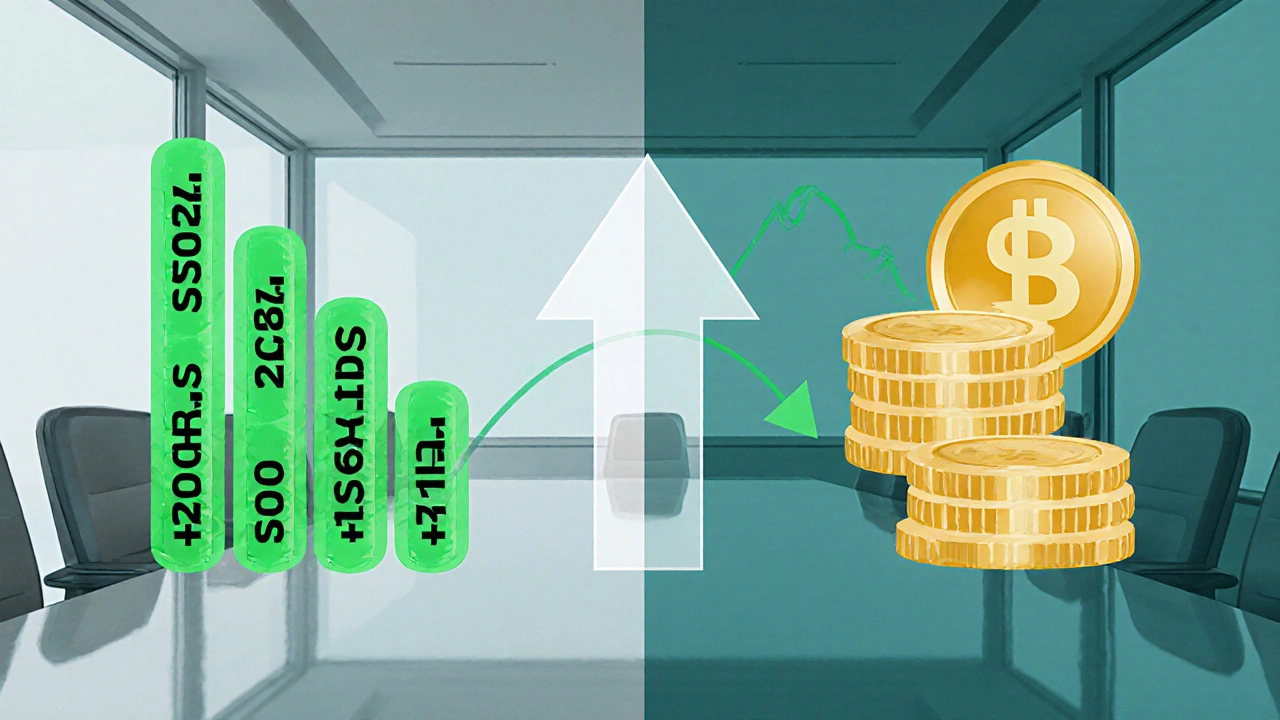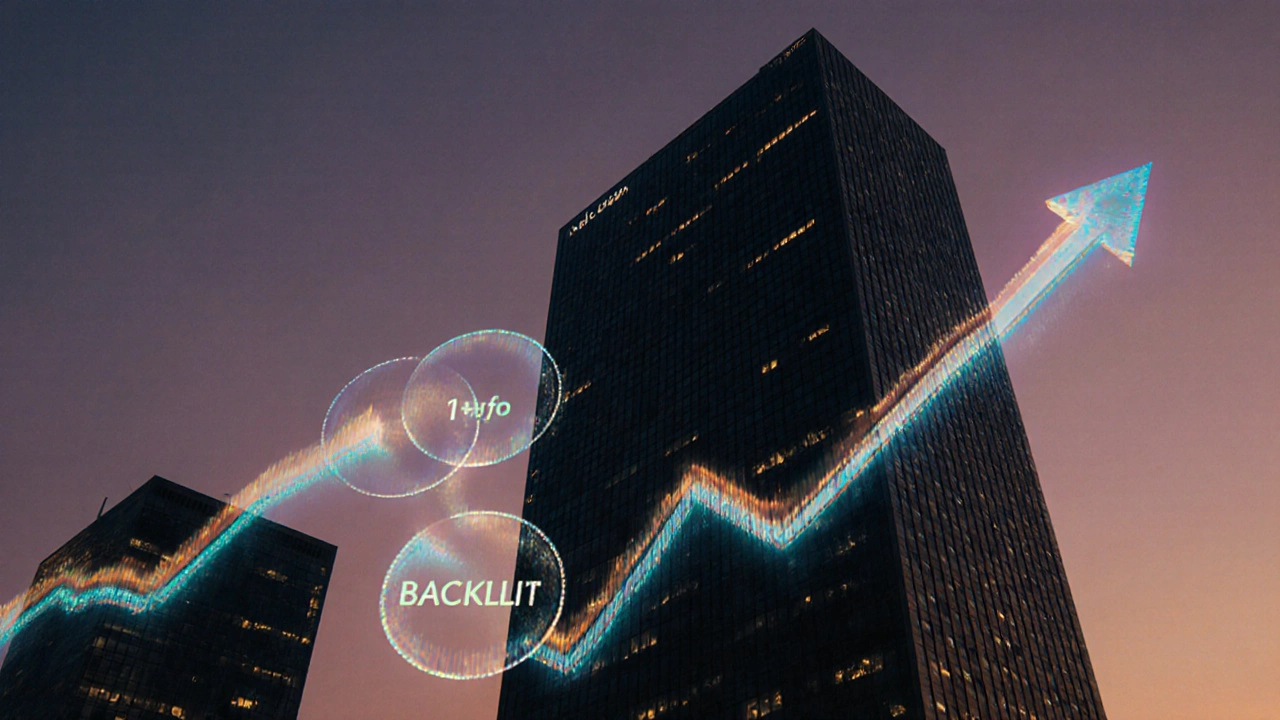Backsplit Calculator
Results
New Share Count:
New Share Price: $0.00
Total Investment Value: $0.00
Market Cap Before: $0.00
Market Cap After: $0.00
Change in Market Cap: 0%
How It Works
When a company performs a backsplit, it reduces the number of outstanding shares while increasing the share price proportionally. This example shows the effect of a 1-for-5 backsplit on 500 shares priced at $2.00 each.
The calculation:
- New share count = Current shares ÷ Split ratio denominator (5)
- New share price = Current price × Split ratio denominator (5)
- Total value = New shares × New price
Quick Takeaways
- A backsplit reduces the total number of a company’s shares, usually to boost the share price.
- It’s a type of corporate action that doesn’t change a company’s market value.
- Shareholders receive fewer shares, but each share is worth more proportionally.
- Backsplits are often used to meet exchange listing rules or improve market perception.
- Investors should watch the split ratio, tax impact, and any potential liquidity changes.
When you hear the term backsplit, you’re looking at a corporate maneuver that flips the usual idea of a stock split on its head. Instead of getting more shares at a lower price, a backsplit gives you fewer shares at a higher price. Below we break down exactly what a backsplit is, why companies use it, and what it means for the people who actually own the stock.
Backsplit is a type of corporate action where a company reduces the number of its outstanding shares, usually to increase the share price and meet exchange listing requirements. It’s sometimes called a reverse stock split, but there are subtle nuances that matter for investors.
How Does a Backsplit Work?
Imagine you hold 500 shares of XYZ Corp trading at $2 each. The board announces a 1‑for‑5 backsplit. After the split, you’ll own 100 shares, but each will be worth roughly $10. Your total investment value stays about the same (ignoring tiny rounding differences and market reactions).
The mechanics are straightforward:
- Ratio announcement: The company declares the split ratio (e.g., 1‑for‑10).
- Record date: Shareholders on this date are eligible for the new share count.
- Effective date: On this day, the exchange updates the share count and price.
During the process, the company’s total market capitalization-Market Capitalization the total market value of a company's outstanding shares, calculated as share price multiplied by the number of shares-remains unchanged because the share price adjusts inversely to the share count.
Why Do Companies Choose a Backsplit?
There are three main reasons companies opt for a backsplit:
- Listing requirements: Major exchanges like the NYSE or Nasdaq often set a minimum share price (e.g., $1). Falling below that can trigger delisting, so a backsplit lifts the price above the threshold.
- Perception and credibility: A very low share price can suggest distress. Raising the price with a backsplit can improve investor confidence and make the stock look more “respectable.”
- Liquidity management: By consolidating shares, trading can become less fragmented, potentially reducing bid‑ask spreads and making price movements clearer.
Note that a backsplit does not inject new cash or change the company’s fundamentals; it’s purely a numerical adjustment.

Impact on Shareholders
For the Shareholder an individual or entity that owns shares of a company’s stock, the immediate effect is a reduction in the number of shares held. However, the proportional ownership in the company remains the same.
Key considerations:
- Tax implications: In many jurisdictions, a backsplit is a non‑taxable event because there’s no realized gain or loss at the moment of conversion.
- Liquidity: Fewer shares can mean lower daily volume, potentially making it harder to buy or sell large positions without moving the price.
- Psychological impact: A higher per‑share price can attract different types of investors, such as those who avoid “penny stocks.”
Backsplit vs. Forward Stock Split
While a backsplit consolidates shares, a forward stock split does the opposite-issuing more shares at a lower price. Below is a side‑by‑side look.
| Aspect | Backsplit (Reverse) | Forward Split |
|---|---|---|
| Purpose | Increase share price, meet listing rules | Improve liquidity, make shares more affordable |
| Typical Ratio | 1‑for‑5, 1‑for‑10, etc. | 2‑for‑1, 3‑for‑1, etc. |
| Share Count Effect | Decreases | Increases |
| Share Price Effect | Increases proportionally | Decreases proportionally |
| Market Capitalization | Unchanged (barring market reaction) | Unchanged (barring market reaction) |
Real‑World Examples
Here are two notable backsplits from the last few years:
- Company A (2023): Executed a 1‑for‑20 backsplit to lift its share price from $0.45 to $9.00, thereby regaining Nasdaq compliance.
- Company B (2024): Performed a 1‑for‑5 backsplit after a prolonged low‑price period; the share price jumped from $1.20 to $6.00, prompting a short‑term price surge of 15%.
In both cases, the Ticker Symbol the unique series of letters assigned to a publicly traded company's stock remained the same, but the number of shares outstanding was reduced dramatically.

How to Handle a Backsplit as an Investor
If you own shares of a company announcing a backsplit, follow these steps:
- Check the ratio and calculate your new share count.
- Review the company’s rationale-are they complying with an exchange rule or trying to reshape perception?
- Monitor the stock price in the weeks after the split; market sentiment can cause short‑term volatility.
- Assess liquidity-if daily volume drops, consider whether you need to adjust position size.
- Consult a tax professional if you’re unsure about the tax treatment in your jurisdiction.
Remember, the backsplit itself doesn’t change the intrinsic value of the company, but how the market reacts can affect your investment’s short‑term performance.
Common Pitfalls and Pro Tips
- Don’t assume a price boost is permanent. After the initial adjustment, the stock can drift back down if fundamentals haven’t improved.
- Avoid panic selling. A backsplit often triggers a brief hype cycle; stay focused on earnings, cash flow, and growth prospects.
- Watch for thin trading. With fewer shares, bid‑ask spreads may widen, making it pricier to enter or exit positions.
- Check for hidden fees. Some brokers charge fees for corporate action processing-confirm ahead of time.
Frequently Asked Questions
Is a backsplit the same as a reverse stock split?
In practice they are the same event-both consolidate shares to raise the price. The term “backsplit” is more common in Australian and UK markets, while “reverse stock split” is used in the US.
Will a backsplit affect my tax bill?
Generally, no. Most tax authorities treat the split as a non‑taxable corporate action because you haven’t sold any shares. However, you must adjust the cost basis per share for future calculations.
Can a backsplit save a company from being delisted?
Yes, that’s a primary reason. Exchanges often require a minimum share price; a 1‑for‑10 backsplit can lift a $0.80 stock to $8.00, restoring compliance.
How does a backsplit affect market capitalization?
Market capitalization stays the same immediately after the split because the higher share price offsets the reduced share count. Any change later comes from market perception, not the split itself.
Should I sell my shares before a backsplit?
Only if you have a solid reason unrelated to the split. The split itself doesn’t create value, so selling solely to avoid the change usually isn’t needed.





